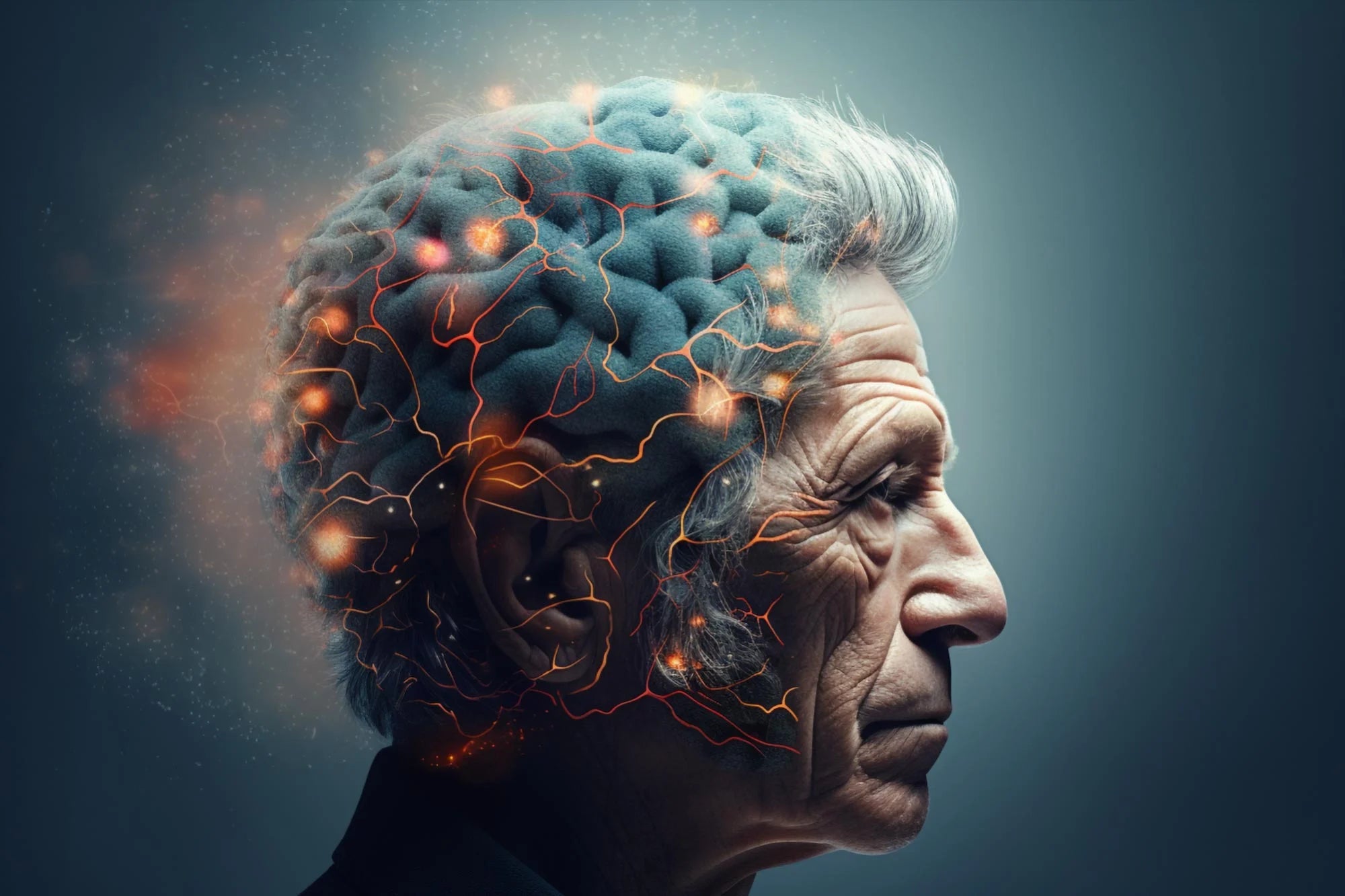Introduction
Alzheimer's disease (AD) is a progressive neurodegenerative disorder characterized by cognitive decline, memory loss, and behavioral changes. The increasing prevalence of AD, especially in aging populations, has prompted the exploration of novel therapeutic approaches. Red light therapy (RLT) and near-infrared therapy (NIR) have emerged as potential non-invasive treatments that may offer neuroprotective and cognitive benefits for individuals with AD. This document explores how these therapies work, the evidence supporting their use, and their potential benefits and safety considerations.
Understanding Alzheimer's Disease
Alzheimer's disease is the most common cause of dementia, affecting millions of people worldwide. It involves the accumulation of amyloid-beta plaques and tau tangles in the brain, leading to neuronal death and brain atrophy. The exact cause of AD is unknown, but it is believed to result from a combination of genetic, environmental, and lifestyle factors.
The symptoms of AD typically progress from mild memory lapses to severe cognitive impairment, ultimately leading to a loss of independence. Conventional treatments focus on symptom management and slowing disease progression, but there is currently no cure for AD. This has led to significant interest in alternative therapies that may offer new avenues for treatment.
Mechanisms of Red Light and Near-Infrared Therapy
Red light therapy and near-infrared therapy involve the use of specific wavelengths of light to penetrate tissues and exert therapeutic effects. RLT usually employs wavelengths between 620-750 nm, while NIR typically uses wavelengths from 750-1200 nm. These therapies are believed to work through several biological mechanisms:
-
Photobiomodulation: This process involves the absorption of light photons by cellular chromophores, particularly cytochrome c oxidase in the mitochondria. This absorption enhances mitochondrial function and increases the production of adenosine triphosphate (ATP), which is essential for cellular energy and function.
-
Anti-inflammatory Effects: Both RLT and NIR can reduce inflammation by modulating the activity of inflammatory cytokines and other mediators. This is particularly relevant in AD, where chronic inflammation contributes to neuronal damage.
-
Neuroprotection and Neurogenesis: These therapies may promote neuroprotection by reducing oxidative stress and supporting the survival of neurons. Additionally, they may stimulate neurogenesis, the process of generating new neurons, which is crucial for maintaining cognitive function.
-
Improved Blood Flow: RLT and NIR can enhance cerebral blood flow, ensuring a better supply of oxygen and nutrients to the brain. This can support overall brain health and function.
Research Evidence on Red Light and Near-Infrared Therapy in Alzheimer's
A growing body of research has investigated the potential of RLT and NIR in treating AD. The evidence spans in vitro studies, animal models, and human clinical trials.
In Vitro and Animal Studies
Studies on cell cultures and animal models have provided insights into the mechanisms and efficacy of RLT and NIR in AD. For example, research has shown that these therapies can reduce amyloid-beta levels and improve mitochondrial function in neuronal cells . Animal studies have demonstrated that RLT and NIR can enhance cognitive performance, reduce brain inflammation, and decrease the burden of amyloid plaques and tau tangles .
Human Clinical Trials
Several small-scale clinical trials have explored the effects of RLT and NIR on cognitive function in humans with AD or mild cognitive impairment (MCI). For instance, a pilot study conducted by Naeser et al. (2017) involved patients with MCI who received near-infrared transcranial and intranasal photobiomodulation therapy. The results showed significant improvements in cognitive performance and functional connectivity within the brain .
Another study by Berman et al. (2017) investigated the use of transcranial near-infrared light therapy in AD patients. The participants exhibited improvements in cognitive function, mood, and sleep quality, suggesting potential benefits for enhancing overall quality of life .
Clinical Applications and Protocols
The clinical application of RLT and NIR for AD involves delivering light to the brain using various devices and protocols. These therapies can be administered transcranially (through the skull) or intranasally (through the nasal cavity). The choice of method depends on the target area and desired depth of light penetration.
Transcranial Photobiomodulation
Transcranial photobiomodulation (tPBM) uses devices that emit light directly to the scalp, allowing photons to penetrate the skull and reach the brain tissue. Devices like helmets or caps equipped with light-emitting diodes (LEDs) or lasers are commonly used. The treatment parameters, such as wavelength, power density, duration, and frequency, are carefully controlled to optimize therapeutic effects.
Intranasal Photobiomodulation
Intranasal photobiomodulation involves the insertion of a small device into the nostril to deliver light to the brain through the nasal cavity. This method is less invasive and can be easily administered at home. It targets the olfactory bulb and prefrontal cortex, regions implicated in AD pathology.
Combined Approaches
Some protocols combine transcranial and intranasal methods to enhance the distribution and penetration of light within the brain. This comprehensive approach aims to maximize the therapeutic benefits by targeting multiple brain regions simultaneously.
Potential Benefits and Outcomes
The potential benefits of RLT and NIR for individuals with AD extend beyond cognitive improvements. These therapies may offer a range of positive outcomes, including:
Cognitive Enhancement
Numerous studies have reported improvements in cognitive function, including memory, attention, and executive function, following RLT and NIR treatment. These enhancements are believed to result from increased neuronal activity, neurogenesis, and improved synaptic plasticity .
Reduction of Behavioral Symptoms
AD is often accompanied by behavioral and psychological symptoms, such as depression, anxiety, agitation, and sleep disturbances. RLT and NIR may help alleviate these symptoms by modulating neurochemical pathways and improving brain homeostasis .
Improved Mood and Quality of Life
Enhanced mood and overall quality of life have been observed in patients receiving RLT and NIR. The reduction in cognitive decline and behavioral symptoms contributes to a better daily living experience and greater independence .
Neuroprotective Effects
RLT and NIR offer neuroprotection by reducing oxidative stress, inflammation, and apoptosis (cell death). These effects help preserve neuronal integrity and function, potentially slowing the progression of AD .
Enhanced Brain Connectivity
Functional connectivity within the brain's neural networks is crucial for cognitive processes. RLT and NIR have been shown to improve connectivity between brain regions, supporting more efficient communication and processing .
Safety and Side Effects
Safety is a critical consideration when evaluating new therapies. RLT and NIR are generally considered safe, with minimal side effects reported. However, it is essential to understand the potential risks and ensure proper usage to avoid adverse effects.
Safety Profile
RLT and NIR are non-invasive treatments that do not involve surgery or pharmacological interventions, reducing the risk of complications. The most common side effects are mild and may include transient headaches, fatigue, or skin irritation at the site of light application .
Contraindications and Precautions
While RLT and NIR are safe for most individuals, certain precautions should be taken:
- Photosensitivity: Individuals with photosensitive conditions should avoid these therapies or consult with a healthcare provider before starting treatment.
- Pre-existing Conditions: Patients with specific medical conditions, such as epilepsy or certain skin disorders, should seek medical advice before undergoing RLT or NIR.
- Device Quality: The quality and specifications of the devices used for RLT and NIR are crucial for safety and efficacy. It is important to use devices that meet regulatory standards and are designed for therapeutic purposes.
Long-term Safety
Long-term safety data for RLT and NIR in AD are limited. Ongoing research is needed to monitor potential long-term effects and ensure sustained safety over extended treatment periods .
In conclusion, red light therapy and near-infrared therapy hold promise as novel interventions for Alzheimer's disease. Their potential to improve cognitive function, reduce behavioral symptoms, and provide neuroprotection positions them as valuable tools in the fight against this debilitating condition. Ongoing research and clinical trials will continue to elucidate their mechanisms, optimize treatment protocols, and confirm their long-term safety and efficacy.
Sources:
- Hamblin, M. R. (2016). Photobiomodulation for Alzheimer's Disease: Has the Light Dawned? Photonics.
- Cassano, P., et al. (2016). Review of Transcranial Photobiomodulation for Major Depressive Disorder and Alzheimer’s Disease. Neurophotonics.
- De Taboada, L., et al. (2011). Transcranial light-emitting diode therapy to improve cognitive function in chronic, traumatic brain injury. Photomedicine and Laser Surgery.
- Naeser, M. A., et al. (2017). Significant improvements in cognitive performance post-transcranial, red/near-infrared light-emitting diode treatments in chronic, mild traumatic brain injury: open-protocol study. Journal of Neurotrauma.
- Berman, M. H., et al. (2017). Low-level light therapy and the brain: A clinical trial in the context of Alzheimer's and Parkinson's disease. Journal of Alzheimer’s Disease.
- Rojas, J. C., & Gonzalez-Lima, F. (2011). Low-level light therapy of the eye and brain. Eye and Brain.
These references provide an overview of the current understanding and ongoing research into the application of red light and near-infrared therapies for Alzheimer's disease.






